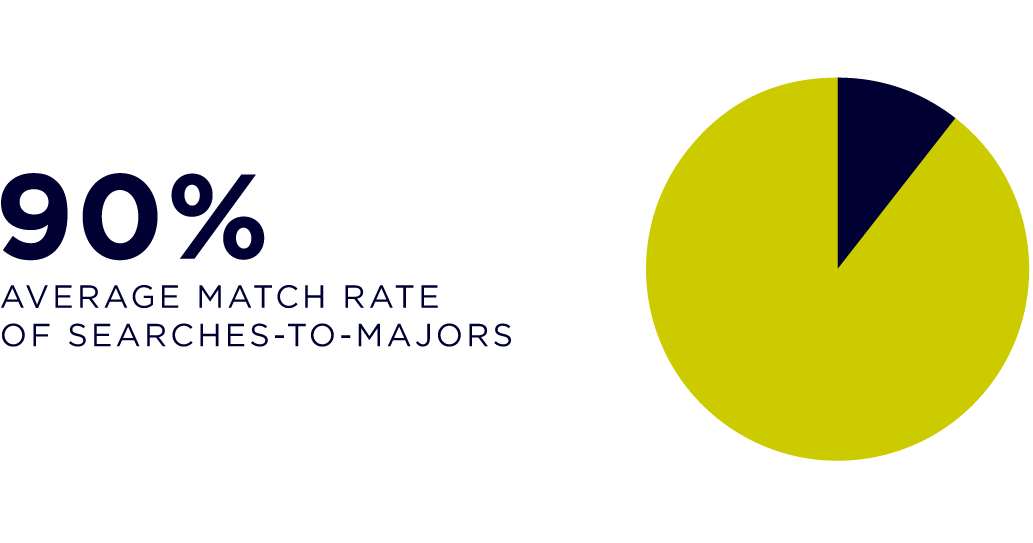Your List of Majors is Deceiving
There seems to be an assumed equivalence between the number of academic programs an institution offers and the breadth of opportunities that a student who attends will have. For this to be true, you’d have to be convinced that a given major can only provide a student with a small number of career paths to follow. But as you know, life seems to have an interesting way of unfolding, where philosophy majors become CEOs of corporations, music majors become university presidents, and political science and pre-law double-majors find fulfillment working as baristas in their neighborhood coffee shop.
We all know how stories like this begin. The major you choose in college is in no way an indication of what you’ll “grow up to be.” Yet some still subscribe to the worn paradigms of:
“If you want to be a doctor, you have to get your undergraduate degree in pre-medicine.”
“If you want to have a business career, you better choose a business major.”
“If you’re going to be a journalist, no way you can do it without a journalism degree.”
While these particular career goals can be reached by choosing these specific majors, it isn’t absolute or essential to do so. In fact, there are situations where having an educational background that is possibly tangential to what you want to pursue career-wise might provide a valuable advantage. As an example, majoring in art history could positively inform the aesthetic sensibilities of a future web designer, should they choose to learn coding later in life. The success of this kind of (seemingly) incongruent pairing can be found in Silicon Valley, where individuals with liberal arts degrees are often the most lauded and sought after for top-level positions, as Forbes magazine points out in this article.
The number of career opportunities your institution can lead prospective students toward is not limited by its number of academic offerings. It’s more limited by how your institution presents those offerings. If you are an institution that only has 30 distinct academic programs, does that mean your graduates only have 30% of the opportunities that an institution with 100 distinct academic programs offers? Certainly not.
Your institution provides opportunities exponentially greater than its number of majors imply. You may have a hard science like biology that can serve as a gateway to numerous professions and fields of study. Tell prospective students this. Market this. Highlight student and alumni profiles that demonstrate this. Cite relevant careers associated with that major. Your majors may be fixed in the number that you offer, but they certainly aren’t fixed in the opportunities they afford. Knowing that, use them to your advantage when marketing your institution.
One of the most effective ways to do this is to change how you currently present your academic offerings. Students ultimately expect jobs; that’s why they are going to your institution. Your academic offerings are a means for them to get those jobs. Laying out all of your majors in an alphabetical index, something akin to a long list of food items you’d find at a grocery store, isn’t enough. Show them those ingredients, yes, but also show them the meals they can make with those ingredients (these would be your student and alumni profiles, likely career opportunities, etc.). Show them where those ingredients are locally sourced from (your faculty, your research, or even your institution’s mission and values). Show them which ingredients are similar, or can be paired with one another (your related majors, your double-degree programs, etc.). Do this, and students will be hungry for your institution. This is the first step in getting prospective students off the old, limiting equation of X Institution + Y Major = Z Career.
The reason (a philosophy major and a journalism major at) RHB developed The Major Key was to help institutions communicate their academic offerings in this fashion. At schools utilizing The Major Key, students can explore all available majors, along with course abstracts, degree types, relevant profiles, informative videos, associated careers, and any related majors—presented to them all at once, in a visually-intriguing way, and within a centralized microsite (instead of having to bounce all across the institution’s website, clicking through seemingly endless links).
The Major Key also enables students to discover majors via an innovative search functionality in which they use their desired career, passion or interest as search criteria. If a student wants to be a journalist, they can type “journalist” in the search bar to see which majors correspond. They’ll see journalism, sure (assuming the institution offers that major). But they may also see communications. Or entertainment & media studies. Or English. Or even public relations.

The effectiveness of this is found in the analytics that are provided to clients using The Major Key, which demonstrates that the average match rate of searches-to-majors (how often a student will find one or more majors that correspond with whichever interest they search) is 90%. Regardless of how many academic offerings they might have, institutions using The Major Key are able to match student interests to majors being offered at a significantly high rate.
Whether you have 100 majors, 30 majors, or 3 majors, what you “offer” is only limited by how you present your institution and its programs. We all know looks can be deceiving. So be mindful of how your list of majors “looks” before you present it to prospective students.
